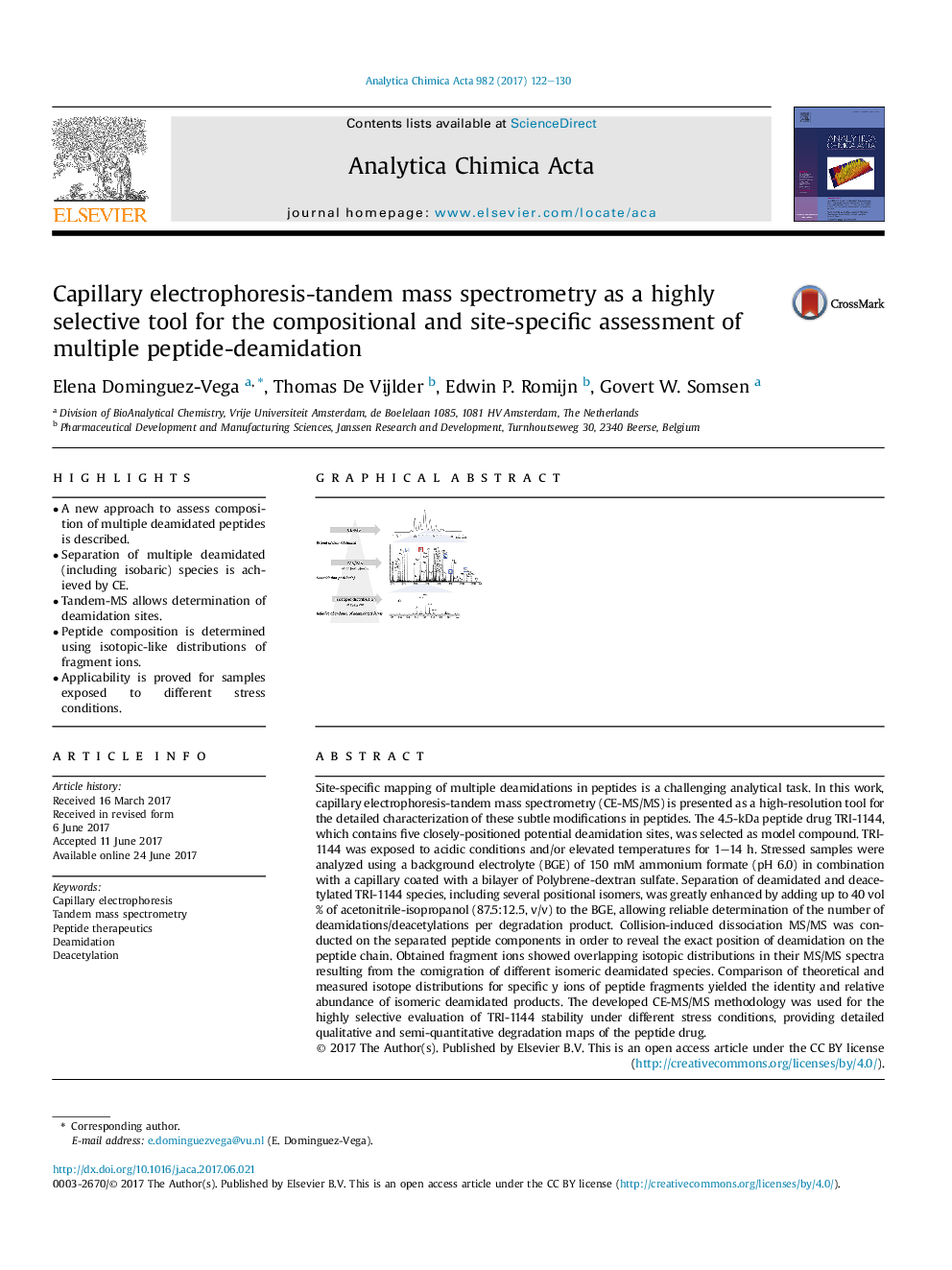| Article ID | Journal | Published Year | Pages | File Type |
|---|---|---|---|---|
| 5130857 | Analytica Chimica Acta | 2017 | 9 Pages |
â¢A new approach to assess composition of multiple deamidated peptides is described.â¢Separation of multiple deamidated (including isobaric) species is achieved by CE.â¢Tandem-MS allows determination of deamidation sites.â¢Peptide composition is determined using isotopic-like distributions of fragment ions.â¢Applicability is proved for samples exposed to different stress conditions.
Site-specific mapping of multiple deamidations in peptides is a challenging analytical task. In this work, capillary electrophoresis-tandem mass spectrometry (CE-MS/MS) is presented as a high-resolution tool for the detailed characterization of these subtle modifications in peptides. The 4.5-kDa peptide drug TRI-1144, which contains five closely-positioned potential deamidation sites, was selected as model compound. TRI-1144 was exposed to acidic conditions and/or elevated temperatures for 1-14Â h. Stressed samples were analyzed using a background electrolyte (BGE) of 150Â mM ammonium formate (pH 6.0) in combination with a capillary coated with a bilayer of Polybrene-dextran sulfate. Separation of deamidated and deacetylated TRI-1144 species, including several positional isomers, was greatly enhanced by adding up to 40Â vol% of acetonitrile-isopropanol (87.5:12.5, v/v) to the BGE, allowing reliable determination of the number of deamidations/deacetylations per degradation product. Collision-induced dissociation MS/MS was conducted on the separated peptide components in order to reveal the exact position of deamidation on the peptide chain. Obtained fragment ions showed overlapping isotopic distributions in their MS/MS spectra resulting from the comigration of different isomeric deamidated species. Comparison of theoretical and measured isotope distributions for specific y ions of peptide fragments yielded the identity and relative abundance of isomeric deamidated products. The developed CE-MS/MS methodology was used for the highly selective evaluation of TRI-1144 stability under different stress conditions, providing detailed qualitative and semi-quantitative degradation maps of the peptide drug.
Graphical abstractDownload high-res image (154KB)Download full-size image
